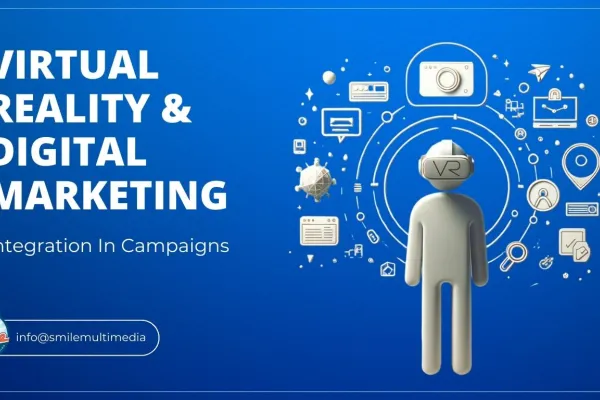Is this the year you’re going to create a successful social media marketing plan for your business? If so, we’ve got some great tips and resources to help with your bold endeavor. It’s not rocket science, but anything worth doing isn’t usually easy, so don’t say we didn’t warn you.
That being said, if you follow these best practices when you’re putting together your social media marketing plans for the upcoming year, it will be difficult to fail.
Committing to a Strategy
Committing to actually investing in the time and resources required to develop and execute a strategic social media marketing plan is half the battle. Unfortunately, many businesses underestimate the power of social media marketing, and don’t include it in their marketing strategies or budget. In our opinion, that is a huge mistake.
Social media is one of the most powerful ways to market to your target audience, but without a plan, you won’t get the results you’re looking for. Once you’ve committed to creating and implementing a plan, it’s all uphill from there.
Are you ready to get started? Here are our recommendations for best practices:
1. Choose Your Networks
Despite what many businesses may think, you don’t have to be on every single social media platform out there. In fact, you shouldn’t even try. The more platforms you’re on, the more resources you’ll need to dedicate to maintaining them. And, unless you’re a huge corporation with an unlimited budget to allocate for social media efforts, then you’re setting yourself up for failure.
Instead, think about your audience and which social networks matter most to them. If that doesn’t help narrow it down, then think about which platforms you’re most likely to keep up with, and which ones have the highest potential to help you generate leads.
2. Brand Your Networks
Once you’ve decided what social networks you’re going to commit to, it’s time to brand them, just like your website and any other promotional materials or applications. Customers who arrive on your social media networks should instantly recognize your brand identity.
It’s important to use your brand colors, logo, and any other brand identifiers to help your network match the look and feel of your website. This will help create a seamless experience for visitors coming from your website.
3. Know Your Brand Voice (and stick to it!)
Will your business be funny or inspirational? Educational or authoritative? Or, maybe you want to be a little bit of all of these things. However you decide to approach your social media networks, the important thing is to be consistent.
Establishing a brand voice and committing to it helps to build trust with your followers. If your followers can’t trust you, then they’re less likely to come back again or to engage with your brand on your network. Once you’ve defined your brand voice, you’ll need to stick to it in every aspect of communication with followers, such as in replies, direct messages, call-to-actions, hashtags, and more.
4. Create Network Themes
Creating network themes gives your followers something to look forward to when they visit your networks. Whether it’s sharing inspirational quotes on Tuesdays or sharing photos of star employees on Wednesdays, people are prone to routine, and like knowing what to expect.
For example, if you do trivia on Mondays for a straight month, and then neglect to do trivia for a couple of weeks, you may lose some fans/followers. Don’t set your followers up for disappointment. If you do have to skip a week for some reason, give them a heads up, and make up for it with something they might want, like a discount or two trivia facts the following week.
5. Slang Words Aren’t Your Friend
Despite whatever urge you may have to use popular slang words in your social media content, it’s not something your followers really dig. A word or phrase you might consider current may actually be far from it.
A 2017 Sprout Social report indicated that “38.4% of social media users said using slang or jargon was the most annoying action from a brand.” A significant number of study participants also said they’d unfollow a brand simply for using slang words on their social media networks. When in doubt, ditch the slang or jargon. Be true to your brand instead.
6. See What Competitors Are Doing
We’re not saying to literally copy what your competitors are doing on social media, but it’s important to see what other businesses like yours are doing, and whether they’re seeing success. By analyzing competitor campaigns, you can better identify which of your ideas are more likely to be effective than others.
What are your competitors talking about? And are their followers engaging with them on these topics? If so, you may want to chime in on the subject in some way. By checking things like hashtags and keywords your competitors are using, you can get some pretty good insight into their engagement and performance levels.
7. Engage with Followers
Aside from creating great content for your followers, you also need to interact and engage with them on a regular basis. It’s important to connect with your followers in a personal way that shows them you care about them as an individual, and also that you’re human.
It doesn’t seem like responding to customer inquiries would be all that difficult to do, but businesses neglect to do it all the time on social media. And guess what? Their customers don’t like it. Why be on social media if you aren’t willing to interact with your customers on it? If you don’t have the time to monitor messages, comments and other engagement, you may need to hire a social media manager.
8. Use the Right Tools
When publishing content to social media, it can be difficult to know what to post when and on which platforms. There are several social media management tools out there, like Hootsuite for example, that can help you to schedule your content in advance, and will even suggest optimal posting times by network.
Buffer is a tool similar to Hootsuite, but uses a much simpler platform. It’s really just a matter of choice. Bitly is another great tool that helps you to shorten, manage and track links you post on your social networks.
Or, if you prefer to hire a full-service digital marketing firm in the Boston area, contact SMILE media today for a free consultation.










